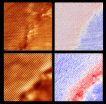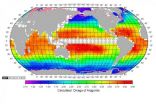Low levels of the DHEA prohormone predict coronary heart disease
2014-11-10
(Press-News.org) Men with low levels of DHEA in the blood run an increased risk of developing coronary heart disease events. The Sahlgrenska Academy study has been published in the Journal of the American College of Cardiology.
The term prohormone refers to the precursor of a hormone. DHEA is a prohormone that is produced by the adrenal glands and can be converted to active sex hormones. While the tendency of DHEA levels to fall with age was discovered long ago, the biological role of the prohormone is largely unknown.
Researchers at Sahlgrenska Academy, University of Gothenburg, have now shown that elderly men with low levels of DHEA in the blood run an increased risk of developing coronary heart disease events.
Lower level - greater risk
The study--which monitored 2,614 men age 69-80 in Gothenburg, Uppsala and Malmö for five years--assessed DHEA levels. The findings demonstrated that the lower the DHEA level at the study start, the greater the risk of coronary heart disease events during the five-year follow-up.
"Endogenous production of DHEA appears to be a protective factor against coronary heart disease," says Åsa Tivesten, who coordinated the study. "High DHEA levels may also be a biomarker of generally good health in elderly men."
Clear correlation
According to Professor Claes Ohlsson, "While the study establishes a clear correlation between DHEA in the blood and coronary heart disease, the discovery does not indicate whether or not treatment with DHEA will reduce the risk in individual patients."
INFORMATION:
"Dehydroepiandrosterone and its Sulfate Predict the 5-Year Risk of Coronary Heart Disease Events in Elderly Men" was published in the Journal of the American College of Cardiology on October 28.
Link to article: http://content.onlinejacc.org/article.aspx?articleid=1918789
Contact:
Åsa Tivesten, Professor at the Sahlgrenska Academy and the Wallenberg Laboratory, University of Gothenburg
Phone: +46 31-3422913
Cell: +46 73-8005250
asa.tivesten@medic.gu.se
FACTS
Approximately 1.4 million Swedes are estimated to have coronary heart disease. The condition is the most common cause of death in the country. Coronary heart disease patients live an average of 12-15 years longer than they did only 30 years ago.
Swedish Heart-Lung Foundation
[Attachments] See images for this press release:


ELSE PRESS RELEASES FROM THIS DATE:
2014-11-10
INDIANAPOLIS -- A Regenstrief Institute and Eskenazi Health study reports on an innovative program that trains and supervises volunteers who act as advocates for adults and seniors who are unable to make their own decisions due to conditions like Alzheimer's disease or coma, but have no family or friends to help them. The study found that the program could serve as a national model to replace or complement the frequently overwhelmed guardianship services provided by state agencies from coast to coast.
Incapacitated patients who lack surrogates present a complex problem ...
2014-11-10
OAK RIDGE, Tenn., Nov. 10, 2014--Scientists at the Department of Energy's Oak Ridge National Laboratory have made the first direct observations of a one-dimensional boundary separating two different, atom-thin materials, enabling studies of long-theorized phenomena at these interfaces.
Theorists have predicted the existence of intriguing properties at one-dimensional (1-D) boundaries between two crystalline components, but experimental verification has eluded researchers because atomically precise 1-D interfaces are difficult to construct.
"While many theoretical ...
2014-11-10
Autoimmune diseases like Crohn's Disease and multiple sclerosis, in which the immune system attacks its own body rather than predatory invaders, affect 5-20% of the global community. A study published recently in Autoimmunity Reviews by Prof. Yehuda Shoenfeld, the Laura Schwarz-Kipp Chair for Research of Autoimmune Diseases at Tel Aviv University's Sackler Faculty of Medicine and Head of Zabludowicz Center for Autoimmune Diseases at Chaim Sheba Medical Center, Tel Hashomer, points to the major role obesity plays in triggering and prolonging these autoimmune diseases.
According ...
2014-11-10
Stanford, CA--Photosynthesis is probably the most well-known aspect of plant biochemistry. It enables plants, algae, and select bacteria to transform the energy from sunlight during the daytime into chemical energy in the form of sugars and starches (as well as oils and proteins), and it involves taking in carbon dioxide from the air and releasing oxygen derived from water molecules. Photosynthetic organisms undergo other types of biochemical reactions at night, when they generate energy by breaking down those sugars and starches that were stored during the day.
Cells ...
2014-11-10
A team of scientists has published the most comprehensive picture yet of how acidity levels vary across the world's oceans, providing a benchmark for years to come as enormous amounts of human-caused carbon emissions continue to wind up at sea.
"We have established a global standard for future changes to be measured," said Taro Takahashi, a geochemist at Columbia's Lamont-Doherty Earth Observatory who published the maps with his colleagues in the August issue of the journal Marine Chemistry. The maps provide a monthly look at how ocean acidity rises and falls by season ...
2014-11-10
Research scientists at VTT Technical Research Centre of Finland have demonstrated a new technique for generating electrical energy. The new method can be used in harvesting energy from mechanical vibrations of the environment and converting it into electricity. Energy harvesters are needed, for example, in wireless self-powered sensors and medical implants, where they could ultimately replace batteries. In the future, energy harvesters can open up new opportunities in many application areas such as wearable electronics.
Research scientists at VTT have successfully generated ...
2014-11-10
New Rochelle, NY, November 10, 2014--To understand their risk for hereditary forms of cancer, such as breast and colon cancer, women need to know their family history. The design and effectiveness of a 20-minute skills-based intervention that can help women better communicate with relatives and gather and share information about cancer family history is described in a study in Journal of Women's Health, a peer-reviewed publication from Mary Ann Liebert, Inc., publishers. The article is available free on the Journal of Women's Health website at http://online.liebertpub.com/doi/full/10.1089/jwh.2014.4754 ...
2014-11-10
A new drug combination for rheumatoid arthritis treats the disease just as well as other intensive treatment strategies but with less medication and fewer side effects at a significantly lower cost. Doctoral researcher Diederik De Cock (KU Leuven) describes the strategy in a new study published in Annals of Rheumatic Diseases.
Rheumatoid arthritis (RA) is a chronic auto-immune disease that causes pain and stiffness in the joints, fatigue, bone damage and, eventually, loss of mobility. RA afflicts around 1% of people in the western world; in Belgium, 80,000 to 100,000 ...
2014-11-10
Hidden away in the tropical darkness of nocturnal Madagascar, scientists have discovered a new species of gecko which has been described in the open access journal Zoosystematics and Evolution.
A master of disguise, the new species Paroedura hordiesi has camouflage pattern to blend with its natural habitat, while climbing on rocks and the ruins of an old fort, where it was spotted by scientists.
Home of the new gecko, the karstic limestone massifs in the region of northern Madagascar are believed to still harbour further undescribed reptile species, some of which might ...
2014-11-10
BOSTON - The innate immune system serves as the body's specialized armed forces division, comprised of a host of defense mechanisms used to battle bacterial infections. Among the system's warriors are white blood cells including the specialized macrophages, which maintain constant surveillance for foreign intruders or pathogens, functioning as the body's first line of defense, poised to attack at barrier sites including the skin, lungs and intestines.
Now, a research team led by investigators at Beth Israel Deaconess Medical Center (BIDMC) finds that naturally occurring ...
LAST 30 PRESS RELEASES:
[Press-News.org] Low levels of the DHEA prohormone predict coronary heart disease






